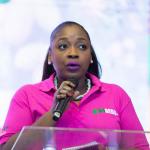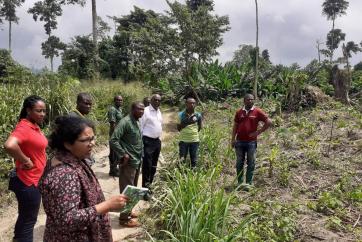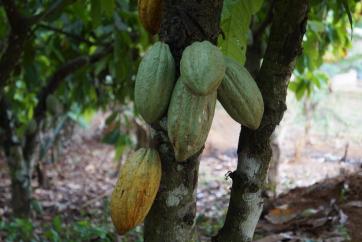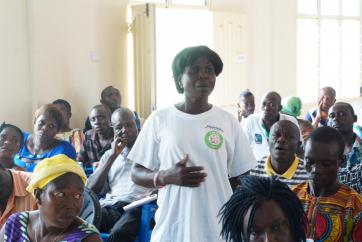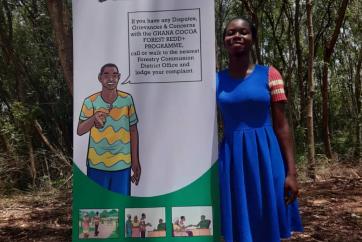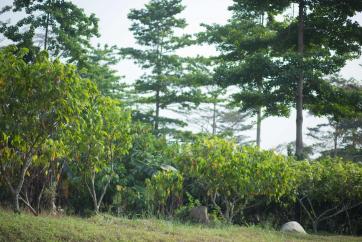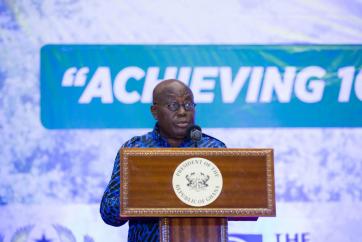What would you say are the major drivers of deforestation in Ghana?
As part of an analysis of the drivers of deforestation and forest degradation, we carried out comprehensive assessments of the three ecological zones of Ghana: the High Forest Zone (HFZ), the Northern Savannah (NZ) and the Transition Zone (TZ). The TZ was not traditionally a distinct ecological zone, however due to deforestation and forest degradation, there was the realisation that the HFZ is receding and the NZ expanding beyond its borders. This has led to a thin belt in the middle part of the country where the ecosystem has changed resulting in the Transition Zone. We realized there’s one driver of deforestation that is occurring across all three zones, and that is agricultural expansion. So most of our forests have experienced either deforestation or degradation due to agricultural expansion, but in each of the ecological zones, it depends on which particular commodity is driving this deforestation.
In the High Forest Zone, amongst the three major commodities aside from food crops, which are cocoa, palm oil and rubber, cocoa drives a lot of the deforestation and degradation. Initially it begins as food crop harvesting but eventually cocoa seedlings are inter-planted and then it takes over the land. Cocoa is also a shade tree, so it does well in the High Forest Zone.
In the Northern Savannah, wildfires are the main driver of deforestation, aside from agricultural expansion, and in the Transition Zone it’s a combination of the factors. Then, if we get into what is really happening in our forests, illegal logging, illegal mining, and wood collection are all factors that have contributed to driving forest degradation.
How has climate change affected the cocoa sector in Ghana?
Ghana is the world’s second largest producer of cocoa beans and that implies that our economy is heavily dependent on the cocoa industry. Therefore, though cocoa production drives forest degradation and deforestation, as a country we still have to be innovative with cross-cutting measures that increase cocoa production and restore forest cover while improving both sectors in the midst of a changing climate.
Because climate change is already presenting its own challenges. The soils are getting drier as rainfall patterns are also changing. Most of our cocoa production is also through rain-fed agriculture, which means the sector will suffer the consequences because we don’t have the rain that we should have.
As people, we are also contributing to that climate change by taking away the forests that are helping us retain the soil moisture that has given the cocoa its ability to thrive and to be sustainable. So going forward, we have to be very innovative in how we’re able to maintain the cocoa trees, maintain our forests, and then mitigate and adapt to the impacts of climate change.
The Ghana Cocoa Forest REDD+ Programme (GCFRP) seeks to reduce carbon emissions by promoting climate-smart cocoa production. How does the programme operate and what has been the response so far?
The programme is just in the cocoa growing area of the High Forest Zone of Ghana, and it covers a mosaic area of 5.9 million hectares with about 2 million hectares of cocoa farms belonging to 800,000 smallholder cocoa farm families. It employs innovative approaches to ensure that we increase cocoa yields in the face of adverse weather conditions, and that we put in a very conscious effort to grow back our forests by increasing shade trees on every cocoa farm and also restoring degraded forests with both indigenous and exotic species. We are also intensifying cocoa production using different approaches like fast growing improved planting materials, rehabilitating old cocoa farms that are diseased or not producing as they used to, and planting new cocoa trees in consultation with the farmers and communities who own these crops. We are also putting irrigation measures into place where needed and carrying out artificial pollination so we have a lot more cocoa beans at the end of the day. These are some of the innovative approaches that have all been bundled into this Cocoa Forest REDD+ Programme to fight and adapt to climate change.
This is a programme that has been well thought-out with cocoa farmers, community members, traditional authorities, civil society organizations, NGOs, government institutions, and it takes care of every aspect of the cocoa supply chain alongside forest restoration, because we want to increase cocoa production without compromising the health of our forests.
In addition to tackling climate change, how does the programme help to enhance local livelihoods?
We are putting safeguards in place to ensure that no community member or cocoa farmer is going to lose their livelihood. In the programme, we have introduced additional or alternative livelihood schemes that give farmers and community members other income streams or revenue when the cocoa season is not in peak, so it takes the pressure off the forests.
One of the highlights of the programme is to provide and strengthen natural resource governance because communities are coming to the table to engage with government to discuss their needs. In this particular engagement, community members themselves have realised that climate change is happening, and that removing trees from farms or forests is not helping them or their economies. When they come to the table, they are willing to engage and they realise that it’s an inclusive process. It’s participatory and their views are recognised, and it also makes them come out to engage for the success of the programme.
When looking at the sustainable development goals (SDGs), how do you think emission reductions through the programme help the SDGs as a whole, and more specifically help Ghana?
That’s one question that is very interesting to me because most of the time when we mention the programme people quickly talk about SDG 13 (climate action) and SDG 15 (life on land), but the programme goes way beyond that.
If you consider SDG 1 (no poverty), this begins with enhancing local community livelihoods. If you take a look at SDG 2 (zero hunger), the programme integrates forest plantation development with food crops, not just large-scale mono-crop cocoa or forest plantations. For good health and quality education (SDG 3 and 4), the programme is designed to provide community benefits. If a community has performed and achieved payment for results in the form of reduced emissions, the community can decide if they need a school or a hospital, and put the money or funds received to that use. In addition, our REDD+ programme has been gender responsive right from the beginning and some of this work was even started by IUCN, incorporating SDG 5 (gender equality). We ensure that we have an inclusive agenda and that both men and women are on board. For SDG 6 (clean water and sanitation), if you have forest restoration, this also includes watershed restoration. I’ve already spoken to SDGs 1 – 6, and I can go on and on.
The programme we are running addresses almost all the SDGs whether directly or indirectly, and if we do this well, we will be able to cover the entire country because we have other REDD+ programmes for every part of the country. Eventually, we would achieve SDGs in collaboration with other sectors that we engage with, because the drivers of deforestation go beyond the forestry sector.
In 2020, major environmental meetings will take place, including the IUCN World Conservation Congress. If you had one issue you wanted to be addressed, what would it be?
I believe that a lot is happening around the world to ensure we are achieving the SDGs or we achieve climate resilience or address rising temperatures, but it’s all being done on a piecemeal basis. Many things have worked in the past and there’s no need to reinvent the wheel, so what we really need now is achieving impact at scale, and when you want impact at scale, consistency and continuity are key. There should also be a lot more coordination between donor communities and countries, and more cross-sector policy coordination.
Is there anything else you want to add?
I just want to express my appreciation of what organisations like IUCN have contributed to this process that we have in Ghana. IUCN has been very helpful to our work and has helped us establish more platforms for engagement and forest governance. We appreciate every person/stakeholder who has contributed to the success of the programme because we couldn’t have done this alone, and if we maintain that level of commitment, I believe we can go far and achieve what we need to achieve. 1.5 degrees Celsius is possible with concerted action at a landscape level, let’s do this!
About the author
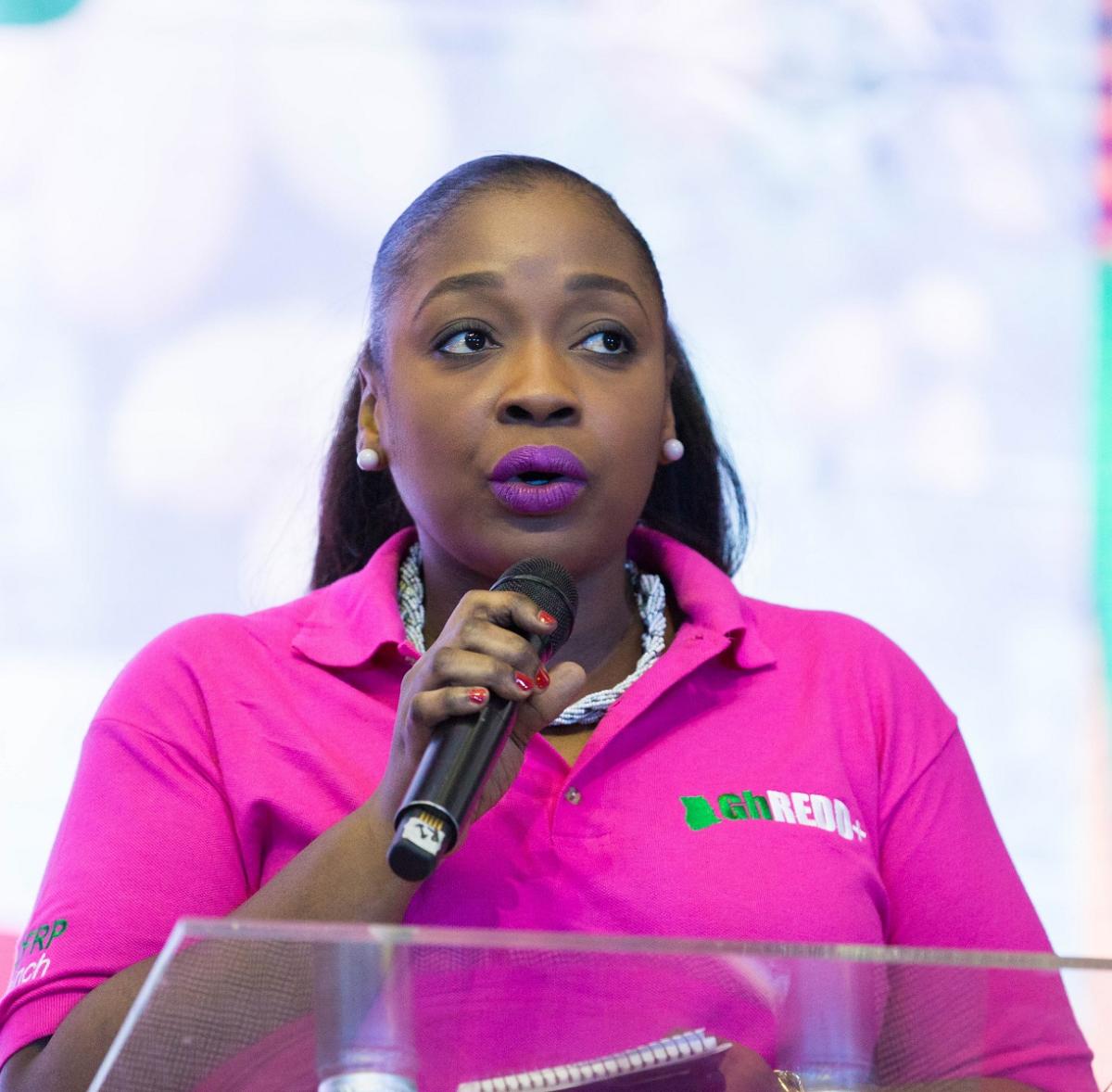
Roselyn Fosuah Adjei is a mid-career executive working with the Forestry Commission of Ghana as the Director for Climate Change and also the National REDD+ Coordinator. She manages a diverse portfolio of landscape programs addressing agriculture led deforestation and forest degradation to increase agricultural production particularly for important national commodities such as Cocoa and Shea whilst aggressively restoring forest cover.
As these commodity value chains involve a lot of both local and international actors ranging from farmers, private sector and government, Roselyn plays a key role in harmonizing programms, policies and actions to build resilient communities for forest-dependent people, including women, and also to build climate resilient landscapes. She has a diverse portfolio of speaking and working engagements on various national and international platforms.

